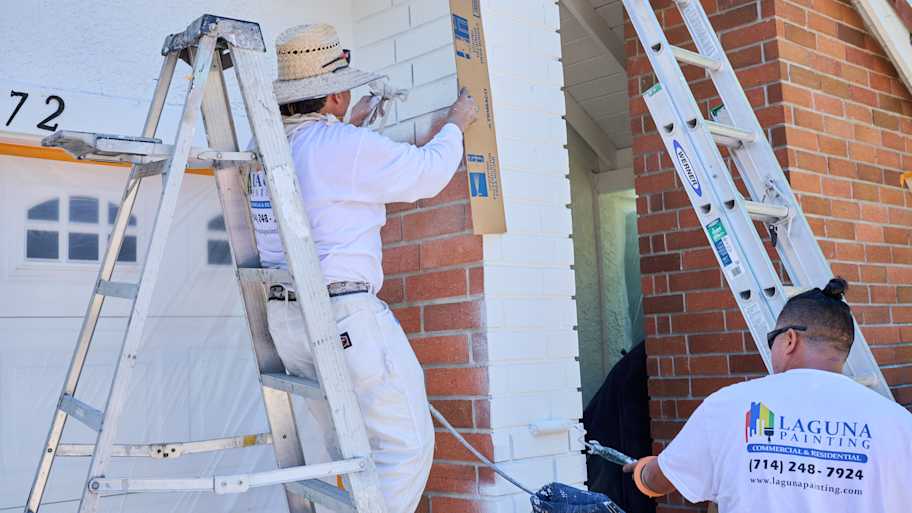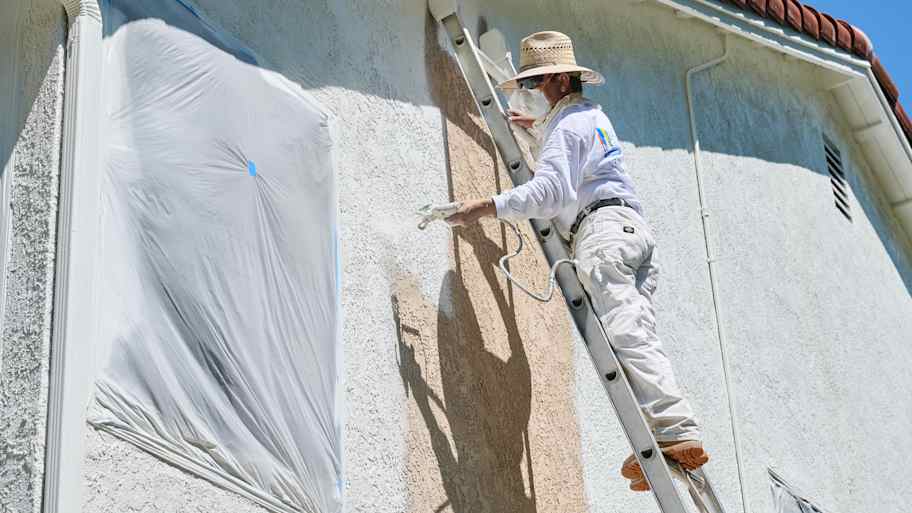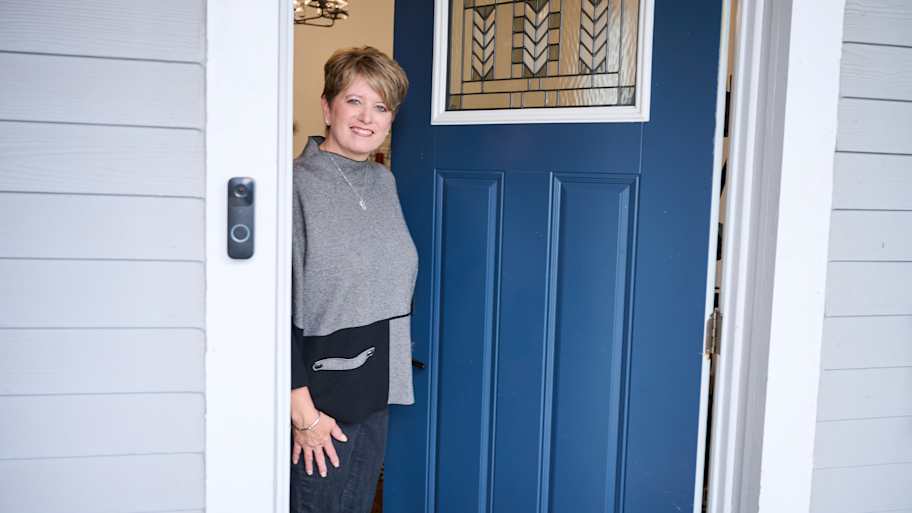How Much Does It Cost to Stain a Fence? [2025 Data]
The average fence staining project costs $1,900, but it can range between $1,400 and $2,200, depending on the type of stain you choose and the length of your fencing.


The average cost to stain a fence ranges between $240 and $4,000, with a national average of $1,900. Staining a wooden fence is a great way to add tons of character to your home and yard, but it can be a large job if you have a lot of linear feet to cover. Learn all the factors that impact how much it costs to stain a fence.
Fence Stain Cost Factors
Staining a fence isn’t the most complicated project, but it requires lots of physical work and free hours. Depending on the size of your fence, the project could take a week or more if you DIY. Understanding the factors that impact cost will help you understand the project in a clearer way.
These cost figures are based on staining only one side of the fence. Staining both sides will add 80% to the cost, or slightly less than double the total cost.
Types
The type of fence you have will play a part in the total cost. For this project—the simpler the better. Fence types like split-rail and flat wooden fences with sparse vertical beams will be the least expensive. More complex fences like lattice fences take a lot longer to prep and stain, ballooning the total project cost.
Size
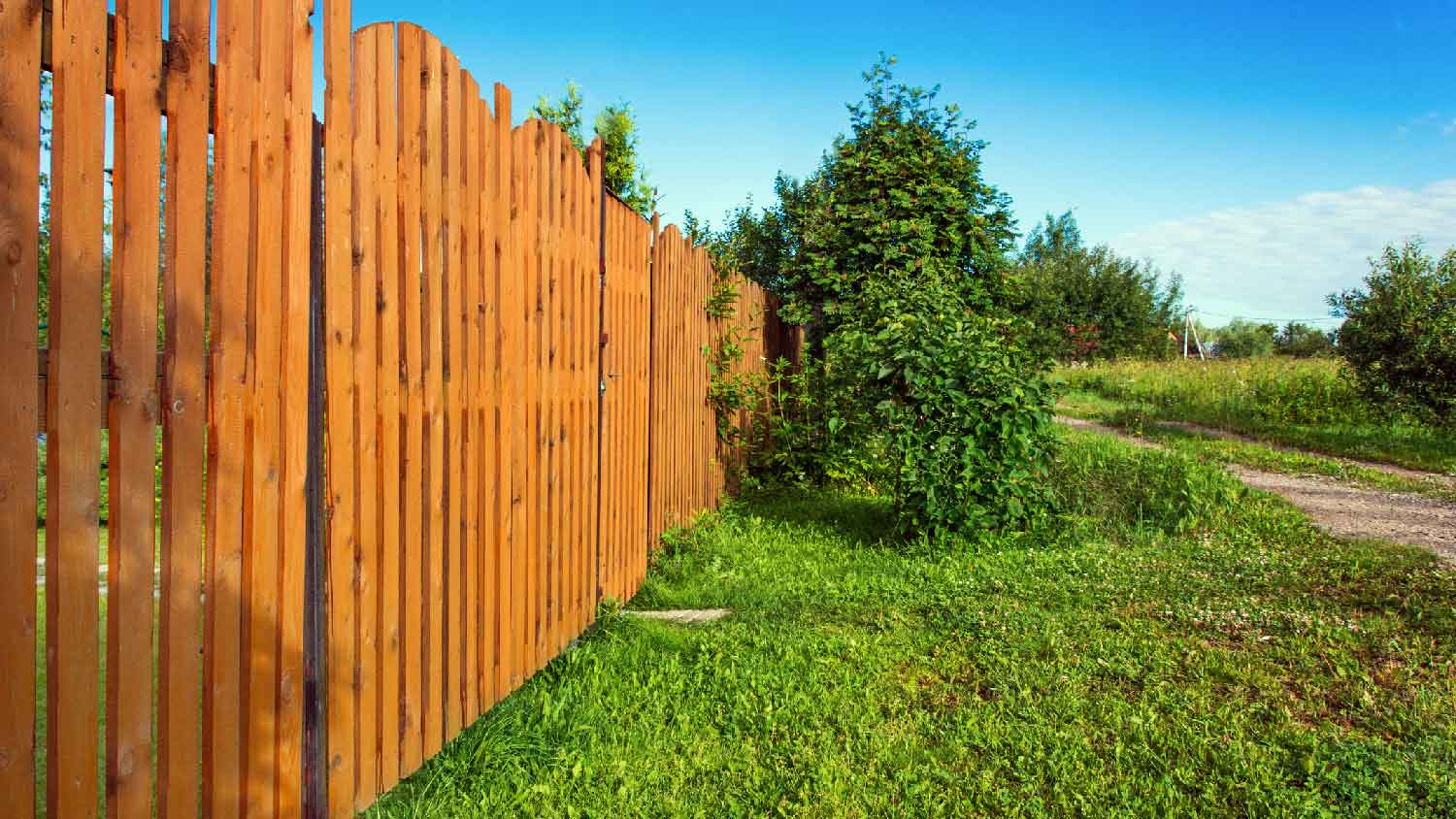
The size of your fence plays a direct role in your total cost. Fences are measured in linear feet as opposed to square feet, with average prices ranging from $4 to $14 per linear foot. Unfortunately, there are no linear savings the longer your fence is. Some other home projects scale into lower costs per square foot as the project grows, but fence staining doesn’t benefit from this phenomenon. The price per linear foot is very similar—from 20 linear feet to 200.
| Linear Feet | Average Cost |
|---|---|
| 20 | $180–$250 |
| 40 | $200–$520 |
| 70 | $360–$890 |
| 110 | $550–$1,300 |
| 180 | $850–$2,200 |
| 230 | $1,150–$2,900 |
| 300 | $1,450–$3,700 |
| 400 | $2,000–$4,800 |
| 600 | $2,900-$7,400 |
Materials
If you hire a pro, material costs will be rolled into your total bottom-dollar quote. Those who choose to DIY, however, need to know the costs of individual materials required. While not as expensive as materials used for, say, laying a foundation, the cost of materials quickly adds up. Keep this in mind when deciding if you want to hire a pro or stain (and prep) your fence yourself.
| Material Used | Average Cost |
|---|---|
| Stain | $20–$50 |
| Paint/stain sprayer | $60–$250 |
| Brushes | $8–$30 |
| Sandpaper | $5–$20 |
| Belt sander | $55–$90 |
| Gloves | $10–$20 |
| Mask | $4–$40 |
| Sealant | $13–$40 |
Labor
Fence staining will cost $50 to $110 per hour for a professional to complete the work. This includes stripping or sanding the old wood (if you’re refurbishing an existing fence), staining the fence, and ensuring the work is fully completed.
Prep
You need to consider the best time to stain a fence before doing any prep work. You want relatively cool, stable temperatures with low wind. You don’t want to do all your prep work only to have it undone by a dust storm or heavy rain. Depending on the length of your fence and its condition, prep work can take anywhere from a few hours to a few days (or more). Whether or not you need to sand the wood depends on whether it had previous paint or stain, if the wood is new, and what your desired result is.
Location
Fences are usually placed on flat ground that's easy to access so that won't be a consideration. However, your geographic location can make a big difference in the cost of the project. The best environment to stain a fence is during slightly cool times with low wind. If you live in an area with strong temperature changes or weather events like snow or rain, this limits the time professionals can stain fences, making their services more in demand and therefore more expensive.
Finishing
Once the stain has completely penetrated the wood and dried, you're ready to seal it. It's incredibly important to read your stain label thoroughly, as most stains now will contain their own sealing properties, eliminating the need for a secondary sealant. In fact, we recommend purchasing such stains to begin with as it cuts down significantly on the hours required and there is minimal effect, if any, on the end result.
Fence Stain Ongoing Costs
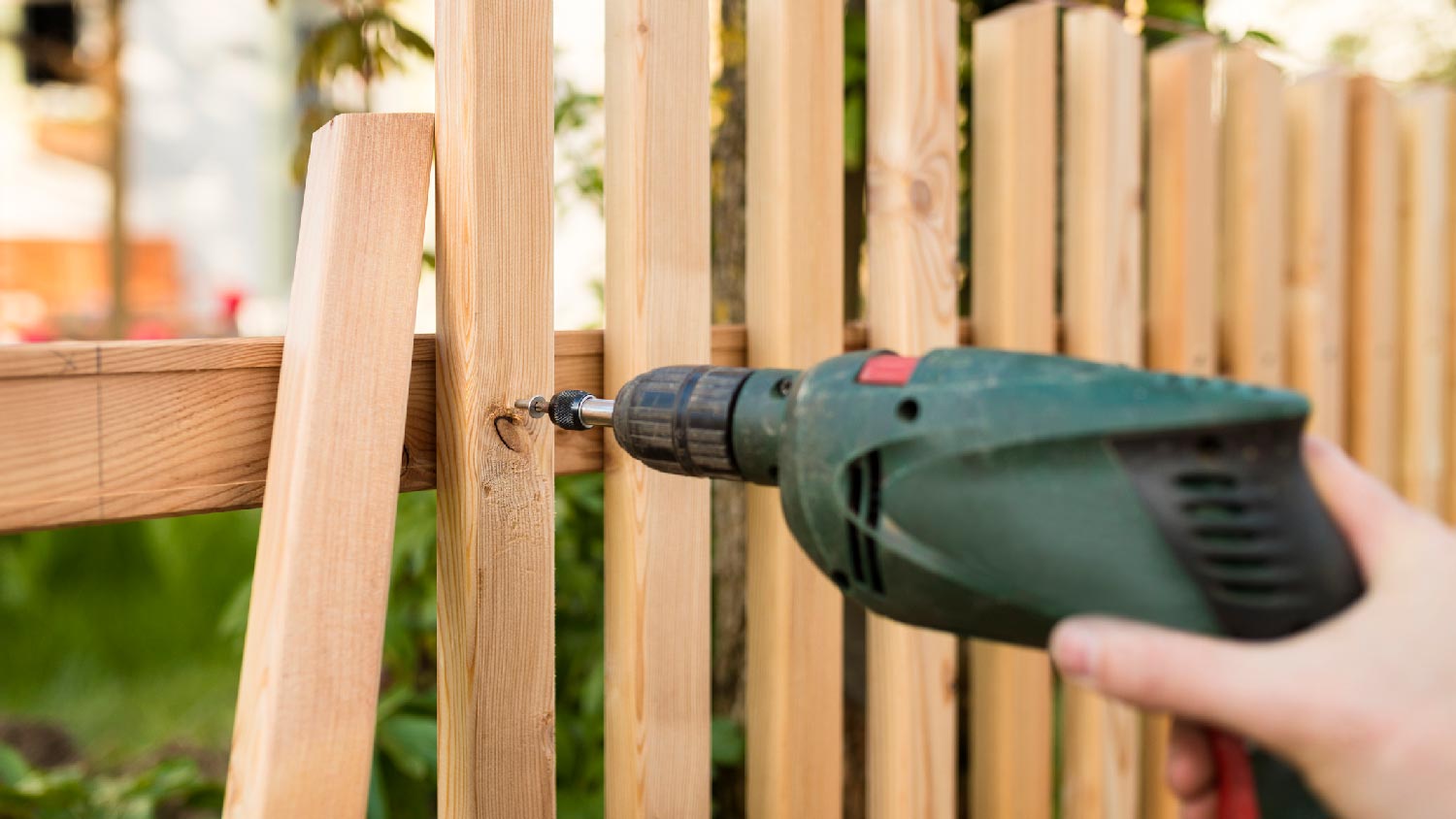
Fortunately, staining a fence has almost no ongoing costs. You do the prep work, stain it, and seal it, and it should be good for a few years. If a section of fence is damaged and requires a restraint, you can either repair it or replace it, but we don’t consider that an ongoing cost.
You really only need to check the stain and sealant once a year to ensure it’s still protecting the wood. If you have a pressure washer, using the lowest setting to clean the fence every few months will keep it looking fresh.
DIY Staining a Fence vs. Hiring a Pro
Unlike other more dangerous projects, staining a fence is a great DIY project with no safety hazards. However, there is a rather large time commitment involved, and the project requires you to finish in a certain amount of time if you want the stain to match across the entire length of the fence.
While there may not be any health dangers, this project still requires a lot of physical activity which may be unfeasible for some homeowners. We recommend talking to a local fence painting expert to discuss the project. Once you get a quote, you can decide if this project is right for you.
Tips to Reduce Cost While Staining a Fence
The number one way to reduce cost by a large margin is to do either the prep work or the entire job yourself. There are not many ways to save money or reduce the cost of materials, and negotiating labor prices with the pro wouldn't necessarily lower the total cost very much.
If you're looking to save money, practice prepping and staining wood on an old table or any leftover wood pieces from other projects to become comfortable with the process before attempting it on your fence.
How Angi Gets Its Cost Data
Home is the most important place on earth, which is why Angi has helped more than 150 million homeowners transform their houses into homes they adore. To help homeowners with their next project, Angi provides readers with the most accurate cost data and upholds strict editorial standards. We extensively research project costs to develop the pricing data you see, so you can make the best decisions for you and your home. We rely on reputable sources, including the U.S. Bureau of Labor Statistics, academic journals, market studies, and interviews with industry experts—all to ensure our prices reflect real-world projects.
Want to help us improve our cost data? Send us a recent project quote to costquotes@angi.com. Quotes and personal information will not be shared publicly.
Frequently Asked Questions
While power washing isn't a requirement before you stain a fence, it can make the job much easier and faster while reducing manual labor requirements. The stain will not work if the wood is full of dirt and dust, so power washing, sometimes called pressure washing, is a fast and effective way to prepare the wood for staining. Remember that you need to stain or repaint relatively soon after the wood has dried so that there isn’t time for dust and dirt to build up again.
If you have the time and the budget, we strongly recommend staining your fence, especially if it's looking a bit tired or hasn't been treated recently. While you may not see the same return on investment (ROI) as you would with a project like a kitchen remodel, staining a fence is one of the best ways to add a facelift to your property—a new fence stain adds serious curb appeal to your home.
If you have experience using an airless sprayer, spraying stains on a fence can make the project five to 10 times faster than it would be if you were rolling on the stain by hand. You may not be able to be as precise, but as long as the prepared wood has adequate stain you shouldn't notice a difference in the end result. We recommend using an airless sprayer for large sections of fence even if it requires you to practice with it first because of how much time it saves.
